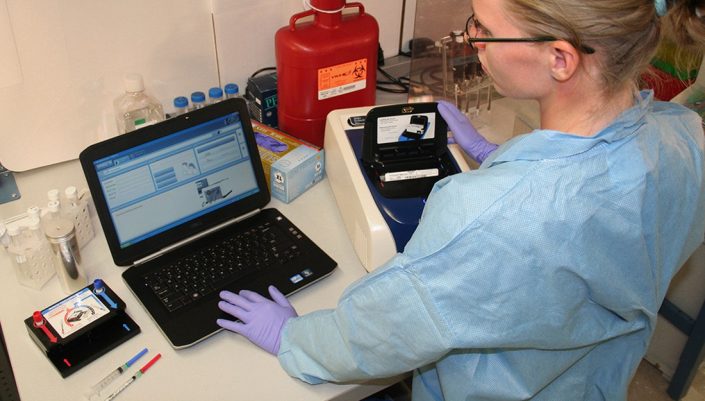What’s causing that fever? New tech can identify pathogen in one hour

Image: College of Medicine
Making the correct diagnosis is difficult when multiple infectious agents can cause the same syndrome. For Carrie L. Byington, a pediatric infectious diseases specialist and the dean of the Texas A&M College of Medicine, it’s also one of the most pressing issues in the field of infectious diseases.
“Determining the cause of a fever, for example, is one of the most common problems in pediatric infectious diseases,” Byington said. “Even though in the vast majority of cases, the cause of the fever is a self-limited viral infection, there’s always that unsettling possibility that the fever is due to life-threatening bacteria, virus, fungus or even parasite.
“Being able to rapidly distinguish the benign from the deadly was a long-standing goal that I knew if realized would really transform the health care landscape,” she said.
To do that, Byington helped develop a diagnostic system called FilmArray with BioFire Diagnostics in Salt Lake City, Utah.
“When I became involved, a test that could distinguish bacteria, viruses, fungi and parasites simultaneously had never really been created before,” Byington said.
FilmArray, with panels that can be used to identify almost 100 different pathogens, is now used in thousands of hospitals in North America and all over the world to diagnose causes of fever, respiratory or gastrointestinal illnesses, and even meningitis or sepsis.
All of this testing can be completed within an hour. Traditional testing that was common just a few years ago could take days to evaluate for multiple pathogens and often was not performed because it was too time consuming or expensive.
Byington, a clinician scientist, collaborated with a group of laboratory scientists and engineers to create a tool that would meet the needs of the practicing physician. It helped that, as a medical doctor, she understands the way physicians approach patients.
“In practice, when an ill patient comes in for evaluation, you can’t do one test, wait for the results, then do another test, and so on,” Byington said. “You need to make decisions quickly and physicians will make these decisions with or without diagnostic data. Having data quickly helps us make better decisions, especially regarding issues related to antibiotic administration or admission to the hospital.”

